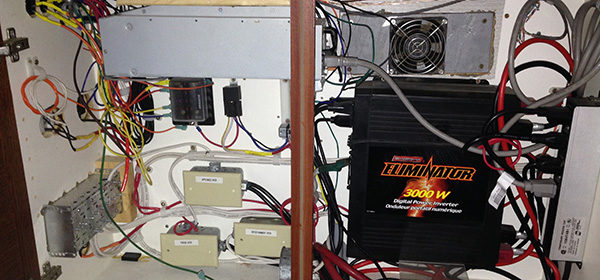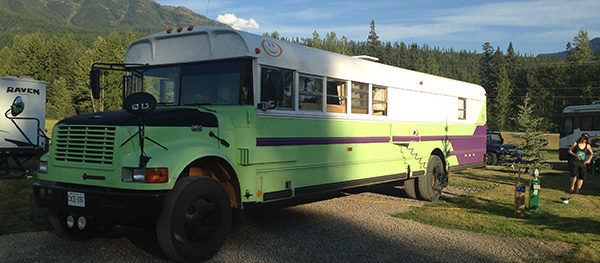Click-bait title aside, domestic wiring in an RV is a bit different from household wiring. When a house is being built, it’ll get permanently hooked up to the grid by professionals with multiple inspections where as an RV will get plugged in all over the place – and who knows how well wired those sources are? For this reason, there are some precautions you should take to keep yourself safe.
Finding the right shore power sources

Don’t bond your ground to neutral – Though in household wiring at the initial entry point you are required to bond your ground and neutral, you aren’t allowed to do this elsewhere in the system for safety’s sake. A motorhome is generally plugged in to systems where this bonding has already been done, making the motorhome a child-system which shouldn’t be bonded. Another reason for not bonding is a practical one. If you plug in to an outlet that was miswired and had the neutral and hot swapped with the ground not getting connected, a bonded ground could end up making the entire bus chassis hot, giving you a shock any time you touch the chassis while standing in long damp grass.
As a note, if you have a genset or an inverter onboard, they will perform the ground/neutral bond internally, so you don’t need to worry about doing it yourself but you do need to ensure that those components are fully isolated from the rest of the system when not in use.
As a minimum, buy a circuit tester and use it before you plug in anywhere – Since you can’t always be sure who did the installation of the outlet you are plugging in to or if the installation has decayed over the years, it’s a good idea to check out sources before you plug in to them. For less than ten dollars at Princess Auto you can get a simple plug-in circuit tester which will confirm that hot is hot, neutral is neutral, and the ground is connected. If everything checks out, you can plug in your RV and enjoy some piece of mind. If things don’t check out you can keep looking for a power source which doesn’t put you at risk.
You should continue to recheck outlets, too. While you should have checked the outlet on the side of your house the first time you hooked up and it may be safe to assume that three days later it’ll still be in good shape, what about a year later? If you have work done on your house, you’ll want to re-check it. But even if you haven’t done anything, it’s good to recheck it every few months just to make sure that conductors aren’t getting tarnished and causing electrical faults to develop.
While I haven’t had a chance to build it yet, I have designs to build an integrated circuit tester and isolation system for Sheila. I anticipate pulling up to an outlet, opening up the electrical storage cabinet, pulling out the hook-up cable, and plugging it in. The hook-up cable would terminate in an isolated box which contains the a testing circuit and a latching relay which feeds the bus. If the outlet I’m plugged in to passes the polarity and connectivity tests, there would be a green indicator on the circuit tester and I could push a switch to latch the relay, switching the domestic load to the external source. If the green indicator isn’t lit, even if I try to push the latching button, the latch won’t engage, making sure that no one else can accidentally hook up to a bad source. Has anyone else built such a device before? I’d assume so since it seems like a reasonably simple safeguard to implement. When I have time to complete my design and draw it in Visio, I’ll post it here.

KISS
Many people are familiar with the KISS principle: Keep It Simple, Stupid. But few realize that the KISS principle is a double-edged sword. In some cases, employing the KISS principle at one point in time creates undue complications at other points in time.
Let us consider the example I gave above. Buying a connection tester and testing an outlet before hooking up your RV sounds like a much simpler solution to implement than building an integrated tester and power latch. It is! It is simpler to implement, however let is consider the other side of the equation.
How to hook Sheila up to an external power source:
|
|
While building an integrated tester is a lot less simple than buying a ten dollar tool from Princess Auto, the process you need to follow in order to safely get hooked up to shore power each time is quite a bit more simple. I lean towards the simpler day-to-day process than the simpler one-time implementation.
Both safety and the counter-intuitive KISS phenomenon come in to play in many other parts in building a Skoolie, such as in your power source selection system, but that’s a whole different subject so I’ll put it in a separate post.